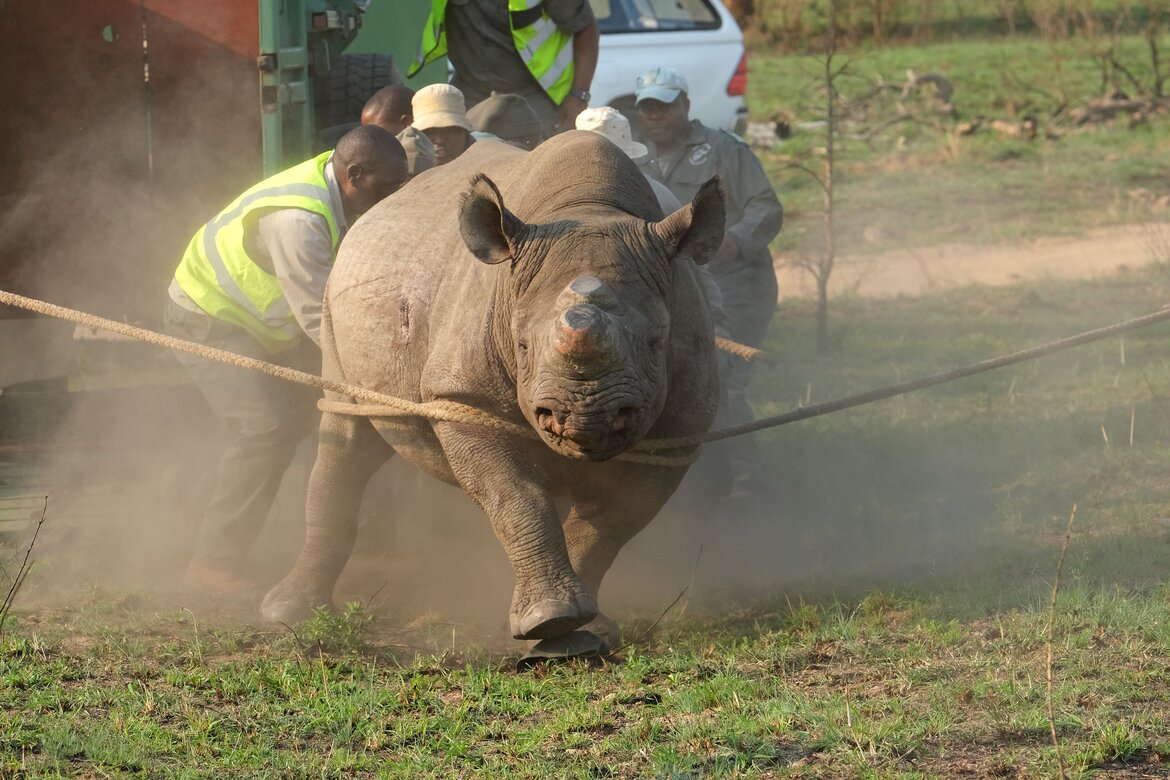Earlier this month, four orphaned Black Rhino were released into Babanango Game Reserve – a momentous first of this scale in using orphaned individuals to establish a new population in South Africa.
Wildlife ACT formed part of these efforts in the translocation of these individuals which included fitting each Rhino with tracking devices to ensure effective post-release monitoring on the reserve.
After six years in captivity under the care of Ezemvelo KZN Wildlife, the four Rhino were relocated by the Black Rhino Range Expansion Project, a partnership between Ezemvelo and WWF. The individuals were orphaned as young calves in separate incidents as a result of poaching and other factors, leaving the youngsters abandoned between the ages of two months and one year old.
Black Rhino are listed as Critically Endangered on the IUCN Red List of Endangered Species, and are severely threatened by poaching and habitat loss. Therefore, the identification of suitable habitat and the establishment of new populations, marks a significant milestone in the growth and protection of the species in South Africa.
Babanango Game Reserve is one of the largest conservation projects of its kind in KwaZulu-Natal. Over the last 30 years, it has introduced a number of priority species onto the 20,056 hectare reserve. The reintroduction of Rhino is important for conservation and adds an iconic species to the tourism product offering for the reserve, driving local economic development.
“The symbolism of this event cannot be overstated. The successful Black Rhino release of these individuals, that, under any other circumstance would have been lost to the species, is a strong testament to the determination and commitment of not only the staff at the game capture facility who spent thousands of hours caring for them, but also to the many donors and funders (some of them just school children) who gave willingly to ensure that these animals were given a chance. The message is clear: we need to remain committed and united as a province to the task of saving this iconic species, even if it is one animal at a time.” Jeffery Cooke, Head of Game Capture, Ezemvelo KZN Wildlife.
Rhino Tracking and Monitoring
To aid in their protection, and before release onto the reserve, each Black Rhino was fitted with both a tracking ankle bracelet and a horn pod, to ensure effective post release monitoring. The pods are fitted to each rhino’s back horn base after dehorning, with a very strong adhesive and specialised technique. These tracking devices include a combination of VHF and LoRa WAN technologies.
The LoRa WAN tracking technology communicates through a series of towers on the reserve. The devices record regular GPS fixes which can be accessed live by the monitoring and management teams to enable more effective monitoring and swift response when there are any concerns. During the first few weeks of monitoring after the Black Rhino release, with the use of this technology, each rhino (orphans and wild) is located every day, while taking utmost care that the individual is not disturbed.
“The long and hard field days while deploying the tracking units on the rhinos’ arrival, and doing intensive post-release monitoring and training, paid off with small daily successes and, of course, beautiful views,” said experienced Wildlife ACT Priority Species Monitor, Anel Olivier.
“With the proper tracking equipment, we were able to ensure each rhino remained safe and in good condition during the critical first days after release. It has been a real privilege to be part of this collaborative Black Rhino conservation milestone. Ventures like these give me hope for the future of our endangered species, protected areas, and people.”
Wildlife ACT looks forward to continuing to collaborate on groundbreaking conservation initiatives such as this successful Black Rhino release.
Project partners: Babanango Game Reserve, Conservation Outcomes, Ezemvelo KZN Wildlife, WWF BRREP and Wildlife ACT.
Read more about some previous Black Rhino conservation work:
